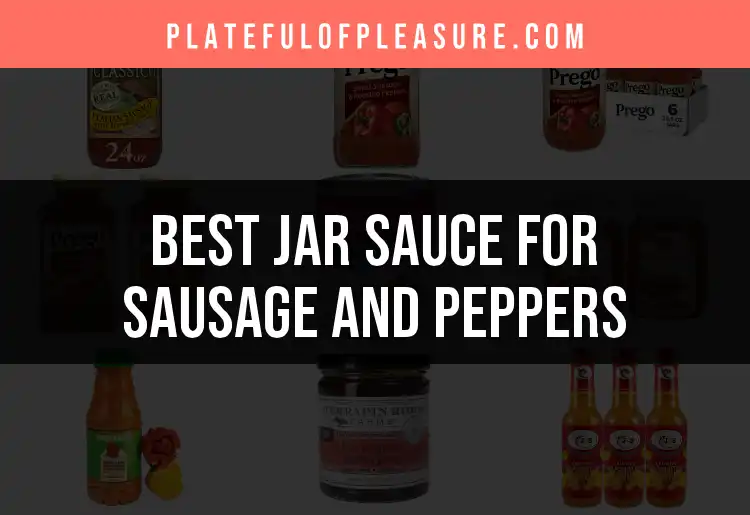Introduction to Recipes
Recipes are more than just instructions for preparing food—they are a bridge between tradition and innovation, a reflection of culture, and a core part of how we share and enjoy meals across the world. At their heart, recipes provide structure that empowers cooks of all skill levels to recreate beloved dishes or invent new culinary masterpieces.
Defining Recipes and Their Significance
A recipe, in its simplest form, is a set of step-by-step directions to create a specific dish or beverage. But beyond that, it's a story: every recipe is steeped in history, reflecting the tastes, tools, and traditions of those who developed it. Recipes can be passed down through generations, tweaked by modern chefs, or reinvented entirely as global influences fuse.
The Evolution of Recipes Through History
From ancient hand-scribed scrolls to modern food blogs, recipes have evolved dramatically:
- Oral traditions handed recipes from cook to cook before widespread literacy.
- Cookbooks allowed broader sharing, turning local favorites into worldwide sensations.
- The Internet Era revolutionized the dissemination of recipes with real-time feedback, video demonstrations, and interactive features.
Key Components of a Good Recipe
Successful recipes share fundamental qualities:
- Clear, concise instructions
- Reliable, measured ingredients
- Logical structure, such as ingredient lists before instructions
- Tips for approachable cooking techniques
- Information on yields, cooking time, and serving size
How Recipes Influence Culinary Culture
Recipes shape culinary trends by preserving classic tastes and inspiring innovation. The rising popularity of international cuisines and health-conscious meals demonstrates how recipes adapt to societal shifts, dietary needs, and ingredient availability.
Types of Recipes
The culinary world boasts immense diversity, with recipes ranging from simple snacks to complicated entrees.
Appetizers and Snacks
These small bites jumpstart a meal or serve as standalone treats. Whether it’s a classic dip or modern finger food, appetizers offer creativity in compact form.
Main Courses
The centerpiece of any dining occasion, main course recipes may focus on meats, seafood, plant-based ingredients, or pasta dishes. For a taste of convenient gourmet, try out frozen chicken fettuccine alfredo meals, which capture restaurant-quality flavors with minimal effort.
Side Dishes
From simple steamed vegetables to more complex creations, side dishes complement and enhance main courses. Consider jazzing up your dinner with boxed dirty rice options, for an easy yet satisfying addition.
Soups and Stews
Whether hearty or delicate, recipes for soups and stews are an essential comfort food. Canned varieties—such as classic canned pea soup—offer both nostalgia and convenience. If you love robust flavors, explore premium store bought beef stew selections for a satisfying, ready-to-eat meal.
Desserts and Baked Goods
A meal isn’t truly complete without something sweet. Home bakers should not miss the ultimate guide to chocolate chip cookies or take a fun detour with a donut cookbook for fresh, creative treats.
Beverages
From invigorating morning coffees to elaborate evening cocktails, beverage recipes can elevate any moment.
Dietary-Specific Recipes
Recipes tailored to specific diets—vegan, gluten-free, keto, or pescatarian—are essential for those with dietary restrictions or preferences. For example, explore pescatarian cookbooks to discover satisfying seafood dishes.
Creating and Developing Recipes
Conceptualizing a New Dish
Recipe creation begins with inspiration—an ingredient, a memory, or a culinary challenge. The most memorable recipes start with a clear vision for flavor, texture, and presentation.
Ingredient Selection and Substitutions
Ingredient choices shape the soul of a dish. Locally sourced or specialty items can differentiate your cooking. When needed, substitutions can be seamless; for example, swapping lentils for beans adds protein without altering a dish’s heartiness.
Balancing Flavors and Textures
Balancing salty, sweet, bitter, sour, and umami notes ensures harmonious flavors. Contrasting textures—crispy garlic croutons atop silky pea soup, for example—add excitement to each bite.
Technique and Cooking Method Experimentation
Experimentation elevates your cooking. Try different preparations, like oven roasting instead of sautéing, to unlock new flavors. For instance, using spice blends for a frozen chicken tikka masala can make at-home meals just as good as restaurant takeout.
Testing and Refining Recipes
Testing is critical. Cook your recipe multiple times, adjusting measurements and techniques based on taste and ease. Have friends or family provide feedback to ensure consistent results.
Documenting and Standardizing Recipes
Standardized instructions foster reproducibility. Write steps clearly, use precise measurements, and note any optional additions, such as suggesting your favorite hot sauce to pair with sardines.
Essential Tools and Equipment for Recipe Preparation
Basic Kitchen Tools
Essential equipment includes:
- Knives: chef's knife, paring knife, serrated bread knife
- Pots and pans: nonstick skillet, stainless steel saucepan, stockpot
- Utensils: spatulas, wooden spoons, whisk
Specialty Equipment
Consider specialty items like:
- Stand mixers for perfect cookies (like those in the guide to chocolate chip cookies)
- Rice cookers to make boxed rice dishes foolproof (discover the best boxed dirty rice))
- Immersion blenders for velvety soups (see canned pea soup inspiration))
Maintaining and Storing Equipment
Proper care extends the life of your tools. Handwash delicate items, regularly sharpen knives, and store small appliances in cool, dry places.
Tips for Efficient Cooking
- Prep all ingredients before starting (mise en place)
- Clean along the way to avoid mess
- Use timers and thermometers for reliability
Ingredients and Their Role in Recipes
Fresh vs. Preserved Ingredients
Fresh ingredients provide bright, robust flavors, but preserved items—canned, frozen, pickled—add convenience and unique tastes. For instance, canned pea soup varieties yield creamy results without fresh peas.
Spices, Herbs, and Seasonings
Mastering seasoning is the chef’s secret weapon. Embrace bold combinations—try pairing hot sauces curated specifically for sardines)—to enhance depth.
Common Ingredient Substitutes
Allergies, preferences, or supply issues might require substitutions. Swap lentils for beans, dried herbs for fresh, or use non-dairy milk in baking.
Sourcing Quality Ingredients
Seek out local farmers’ markets, specialty stores, or reputable online vendors for the best flavors and nutrition.
Special Ingredient Focus Topics
Maid Pickles Ingredients
Want to recreate that signature tang? We break down everything you need to know about Maid pickles ingredients for your own pickling adventures.
Perfect Hot Sauce Pairings
Elevate pantry staples with the best hot sauces for sardines. We profile sauces that balance heat, acidity, and umami.
Lentil Varieties and Uses
Discover the options for hearty, healthy meals with comprehensive lentil guides, including the best types for soups, salads, and stews.
Cooking Techniques and Methods
Basic Techniques
Learn the fundamentals—boiling, baking, sautéing, roasting—to build a foundation. Skills like these turn out classics such as canned pea soup and stir-fries.
Advanced Techniques
Expand your repertoire with sous vide, fermentation, or smoking to impress guests and improve taste complexity.
Technique-Specific Recipes
- For a comfort-food classic, try making the best canned pea soup at home or from the store
- Take advantage of frozen chicken tikka masala options for an authentic Indian meal in minutes
- Boxed dirty rice mixes offer quick Southern-style sides
- Master cookies with trusted chocolate chip cookie recipes
- Indulge in creamy pasta with frozen chicken fettuccine alfredo solutions
Recipes by Cuisine
Italian
Relish the robust flavors of tomatoes, basil, and olive oil in classic Italian fare.
French
Master the delicate techniques required for sauces, pastries, and rich stews.
Asian
From sushi to spicy curries, Asian recipes bring bold, dynamic flavors to the table. Try out highly rated frozen chicken tikka masala for an Indian classic at home.
Middle Eastern
Layered spices and slow-cooked meats characterize this healthful, aromatic cuisine.
Latin American
Savor vibrant Latin-inspired meals; don’t miss Cuban cookbook recommendations for classics like ropa vieja.
North American
From hearty stews to regional specialties, North American recipes embrace comfort and innovation.
Variations and Fusion Recipes
Combine elements of different traditions for new flavor experiences, like pairing pescatarian guides for seafood fusion.
Regional and Cultural Food Guides
Cuban Cuisine
If you're drawn to tropical flavors and history-rich dishes, check out must-have Cuban cookbooks for authentic recipes like picadillo and arroz con pollo.
Hawaiian Cuisine
For a taste of the islands, explore the best Hawaiian cookbooks, offering everything from poke bowls to decadent haupia.
Pescatarian and Seafood Focused Recipes
Seafood lovers will appreciate the variety and nutrition found in the best pescatarian cookbooks, with recipes ranging from grilled fish to seaweed salads.
Traditional Recipes and Modern Twists
Evolving family recipes keeps traditions alive—modernize classic dishes by incorporating global ingredients or upgraded techniques.
Cookbooks and Recipe Collections
How to Use a Cookbook Effectively
A good cookbook is both an inspiration and a reference. Read recipes in advance and review technique sections before starting to ensure success.
Top Recommended Cookbooks
- Savor island flavor with the most popular Cuban cookbooks
- Sample luau favorites in trusted Hawaiian cookbooks
- Enjoy the ocean’s bounty with top-rated pescatarian cookbooks
- Perfect your sweets with a donut cookbook for all skill levels
Digital vs. Physical Cookbooks
While digital cookbooks offer quick searching and portability, many cooks still cherish the tangible feel and annotations of a print book.
Specialized Recipe Topics
Soups and Stews
Warm up with the top-rated store bought beef stew picks or try new spins on comfort classics like canned pea soup favorites.
Pasta and Rice Dishes
Discover hacks for extraordinary weeknight meals with our frozen chicken fettuccine alfredo picks and trusted boxed dirty rice brands.
Desserts and Cookies
Bake to impress with award-winning chocolate chip cookie recipes, or expand your repertoire with specialty donut cookbooks.
International Cuisine
Explore the world from your kitchen with Cuban cookbook advice, Hawaiian favorites, and ideas from pescatarian guides.
Quick and Convenience Recipes
If time is short, try frozen chicken tikka masala brands ranked best and store-bought product hacks for easy and nutritious meals.
Ingredient-Focused Subtopics
- Replicate that tangy flavor profile with a breakdown of Maid pickles ingredients
- Add zing to seafood using hot sauce pairings for sardines
- Dive deep into the best lentils and how to use them for healthy, protein-rich dishes
Ingredient Storage, Preservation, and Food Safety
Proper Storage Techniques
Proper storage maintains ingredient quality. Stash herbs in damp paper towels, refrigerate perishables quickly, and follow first-in-first-out principles.
Preservation Methods
- Canning: Ideal for soups like homemade or canned pea soup
- Freezing: Perfect for make-ahead meals, such as frozen chicken tikka masala
- Pickling: Preserve seasonal produce with inspiration from Maid pickles ingredients
Food Safety and Hygiene
Always wash produce, cook meats thoroughly, and avoid cross-contamination for safe and healthy meals.
Plating, Presentation, and Food Styling
Basic Principles of Food Presentation
Visual appeal starts with simple concepts: odd numbers for arrangement, pops of color, and contrasting textures.
Techniques for Enhancing Visual Appeal
Try ring molds for layered salads, drizzle sauces artistically, or dust desserts with powdered sugar for a professional touch.
Photography Tips for Recipes
Use natural light, minimalist backgrounds, and focus on the dish's best angle to showcase your creations.
Success Tips and Troubleshooting
Common Cooking Problems and Fixes
Burned cookies? Flat bread? Too-spicy curry? Address mistakes by adjusting portions, temperatures, or flavors—or learn how to rescue dishes in progress.
Adjusting Recipes for Dietary Needs
Make recipes gluten-free by using alternative flours, or reduce sodium without sacrificing taste by ramping up herbs and spices.
Scaling Recipes for Different Servings
Cooking for a crowd or just one? Carefully recalculate ingredient amounts and adjust cook times to maintain flavor and texture.
Incorporating Recipes into Meal Planning
Weekly Meal Prep Strategies
Batch cooking and pre-portioning save time. Use recipes like quick frozen chicken fettuccine alfredo to streamline busy schedules.
Balancing Nutritional Content
Plan meals to incorporate all food groups, using cookbooks like those filled with pescatarian recipes for nutrient-dense inspiration.
Cost-Effective Meal Planning
Choose recipes that stretch premium ingredients across multiple dishes or make the most of pantry staples, such as canned pea soup guides.
User-Generated Recipes and Community Involvement
Encouraging Recipe Sharing
Invite others to share versions of favorites, from the best chocolate chip cookies to regional Cuban specialties.
Reviewing and Rating Recipes
Encourage honest feedback on donut cookbook recipes or store bought beef stew reviews to help others make informed choices.
Building a Recipe Community
Promote respectful discussion, tips, and modifications, fostering a space where both beginners and experts learn and grow.
Recipe Formatting and Content Best Practices
Clear and Concise Instructions
Write in straightforward sentences. Example:
1. Heat oil in a large pot over medium heat.
2. Add onions and garlic, sauté until translucent.
3. Stir in peas, broth, salt, and pepper. Simmer 20 minutes.
See this approach in our best canned pea soup recipes.
Ingredient Lists and Measurements
Always list ingredients in the order used, with clear measurements, to minimize confusion.
Visual Aids and Step Illustrations
Step-by-step photos or diagrams can clarify complex instructions.
Including Nutritional Information
Highlight calories, protein, fat, and major allergens where possible. Nutrition facts are especially helpful for recipes like those found in pescatarian cookbooks.
For a deeper dive into any of these topics or a specific product, check out our featured culinary guides:
- Explore creamy canned pea soup options
- Try frozen versions of chicken tikka masala
- Find the best boxed dirty rice brands
- Perfect your baking with top-rated chocolate chip cookies
- Get creative with a specialty donut cookbook
- Cook classic dishes from the best Cuban cookbooks
- Savor island life with top Hawaiian cookbook picks
- Broaden your seafood expertise through comprehensive pescatarian cookbooks
- Understand Maid pickles’ unique ingredients
- Spice up your seafood with the best hot sauces for sardines
- Unlock the health benefits of premium lentils and how to use them
















